7 NATURAL FOODS THAT LOWERS CHOLESTEROL
April 23, 2014 by admin
Filed under Tips for Ayurveda
Cholesterol is gradually becoming a common health problem due to the consumption of oily and fast foods. More and more individuals are being treated for heart related disorders. Let us understand what causes cholesterol and what are the natural foods that help lower cholesterol.
Cholesterol is a waxy, fat-like substance made in the liver and other cells and found in certain foods, such as food from animals, like dairy products, eggs, and meat.
Main functions of Cholesterol:
- Contributes to the structure of cell walls.
- Makes up digestive bile acids in the intestine.
- Allows the body to produce vitamin D.
- Enables the body to make certain hormones.
High Cholesterol causes Heart Disease
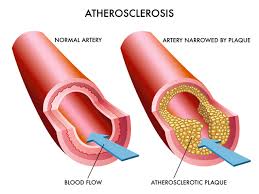 When too much cholesterol is present, a thick hard deposit like plaque may form in the body’s arteries narrowing the space for blood to flow to the heart. As time progresses, this buildup causes atherosclerosis (hardening of the arteries) which can lead to heart disease.
When too much cholesterol is present, a thick hard deposit like plaque may form in the body’s arteries narrowing the space for blood to flow to the heart. As time progresses, this buildup causes atherosclerosis (hardening of the arteries) which can lead to heart disease.
Types of Cholesterol
Cholesterol is oil-based and so does not mix with the blood, which is water-based. It is therefore carried around the body in the blood by lipoproteins. Lipoproteins are classified as high density, low density, or very low density, depending on how much protein there is in relation to fat.
- Low density lipoproteins (LDL): LDL, also called “bad” cholesterol, can cause buildup of plaque on the walls of arteries. The more LDL there is in the blood, the greater the risk of heart disease.
- High density lipoproteins (HDL): HDL, also called “good” cholesterol, helps the body get rid of bad cholesterol in the blood. The higher the level of HDL cholesterol, the better. If levels of HDL are low, the risk of heart disease increases.
- Triglycerides: Triglycerides are another type of fat that is carried in the blood by very low density lipoproteins. Excess calories, alcohol, or sugar in the body are converted into triglycerides and stored in fat cells throughout the body.
Tests for Cholesterol:
The cholesterol test is done after a period of fasting – no food, drink or pills for min 9 to 12 hours – to enable an accurate reading of LDL cholesterol from the blood test. The screening also gives information about total cholesterol, HDL cholesterol and triglyceride levels.
Guidelines set for Total Cholesterol in Lipid profile are:
- Desirable: less than 200 mg/dL
- Borderline high: between 200-239 mg/dL
- High: 240 mg/dL or above.
Limitations to food intake:
- Limiting foods that contain Cholesterol (from animal foods, such as egg yolks, meat and cheese)
- Saturated fat (found in some meats, dairy products, chocolate, baked goods, and deep-fried and processed foods)
- Trans fat (found in some fried and processed foods).
Cholesterol Management with lifestyle changes:
- Eat a ‘heart-healthy diet’
- Exercise regularly
- Quit smoking
- Control weight increase.
Natural foods that control cholesterol
You may have heard a lot about high cholesterol in few people. After the medical examination you also get to hear an underlined statement by the consulting physician to lower cholesterol levels. With all the news and awareness people set a new daily regimen i.e doing exercise, walking, eating healthy and losing weight. For some all this is not enough. You can make a big difference by eating natural foods that can help lower cholesterol levels.
Fenugreek seeds
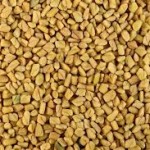 Fenugreek seeds (methi seeds) are a rich source of constituents known as steroidal saponins that help to reduce the body’s absorption of cholesterol coming in through the fat-rich foods we eat. Best way to consume Methi seeds is by powdering heating methi seeds over low flame for about 2 minutes. When cool powder methi seeds. Use 1 tsp of this powder in hot or cold water and take once a day. Sprinkle methi powder in the gravy of curries prior to switching off the flame.
Fenugreek seeds (methi seeds) are a rich source of constituents known as steroidal saponins that help to reduce the body’s absorption of cholesterol coming in through the fat-rich foods we eat. Best way to consume Methi seeds is by powdering heating methi seeds over low flame for about 2 minutes. When cool powder methi seeds. Use 1 tsp of this powder in hot or cold water and take once a day. Sprinkle methi powder in the gravy of curries prior to switching off the flame.
Garlic
Garlic is used in Indian kitchens to add flavor to the dishes. There are multiple benefits of garlic. Garlic (Lahasun) reduces LDL cholesterol, prevents a rise of blood pressure and also avoids the deposition of plaque on the walls of arteries, reducing chances of heart attack and stroke. Garlic contains sulphurous compounds that act as antioxidants and also help with expansion of the blood vessels, keeping blood pressure at a normal level. Consume a few cloves of raw garlic every day . If you cannot bear the raw garlic taste crush and add it into your curries and gravies. For maximum benefit, crush or chop garlic and leave it for 5 minutes to activate the beneficial compound called allicin – after this, even adding tamarind or lemon juice will not destroy the garlic’s action. Avoid microwaving or boiling entire garlic cloves because this can destroy the activity of the vital constituents.
Onions
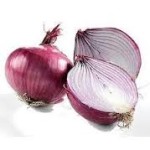 Onion (kandaa) contains a constituent called quercetin that is known to be a strong antioxidant; this means it can prevent the damaging effects of free radicals on human tissues. Researchers have linked quercetin of onions with increased levels of HDL cholesterol as well as low levels of LDL cholesterol. Best way is to consume onion raw in the form of salads.
Onion (kandaa) contains a constituent called quercetin that is known to be a strong antioxidant; this means it can prevent the damaging effects of free radicals on human tissues. Researchers have linked quercetin of onions with increased levels of HDL cholesterol as well as low levels of LDL cholesterol. Best way is to consume onion raw in the form of salads.
Nuts and Dry fruits
Nuts such as almonds, pistachios, hazelnuts and walnuts are rich in polyunsaturated fatty acids that help to keep the arteries healthy. Eat them in raw form without adding salt or sugar or you will add to the calorie content. Watch out as eating nuts in excess may prove counterproductive because the fats in them can cause weight gain.
Oats & Beans
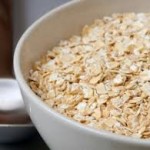 Oats are a rich source of fiber and a compound called beta glucan; these act together to bring about a reduction in the levels of LDL cholesterol. Oats may be consumed by cooking slightly in water and then mixing in milk or buttermilk; you could also substitute oats for some of the rice in dosa batter or khichadi.Kidney Beans contain a large amount of fiber and can help to reduce the quantity as well as the rate of cholesterol absorption from the diet. Include dishes containing both black and white Rajma as a regular item on your menu.
Oats are a rich source of fiber and a compound called beta glucan; these act together to bring about a reduction in the levels of LDL cholesterol. Oats may be consumed by cooking slightly in water and then mixing in milk or buttermilk; you could also substitute oats for some of the rice in dosa batter or khichadi.Kidney Beans contain a large amount of fiber and can help to reduce the quantity as well as the rate of cholesterol absorption from the diet. Include dishes containing both black and white Rajma as a regular item on your menu.
Coriander water
Ayurveda strongly recommends having coriander water i.e Malli vellam.Coriander is a very good diuretic. It makes the kidneys perform better so that they flush out the excess unneeded cholesterols from the body. Holy basil has the capacity to dissolve the accumulated cholesterol from the arteries into the person’s bloodstream. Drink lots of water every day, in which a few coriander seeds have been boiled.
Fish
Certain species of fish are a storehouse of the healthy omega-3 fatty acids that reduce LDL cholesterol and protect the heart. Herring, salmon (surmai), mackerel (bangda), sardines (Padwa / Washi), halibut and lake trout are good sources of these fatty acids that also help increase HDL cholesterol. Preferably consume fish in grilled or baked form; frying it will only add to the unhealthy fat content of your food.
Follow diet changes and lifestyle changes. Take care of your health.
COMMON FOODS TO LOWER HIGH BLOOD PRESSURE
October 4, 2013 by admin
Filed under Tips for Ayurveda
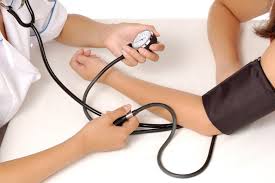 Hyper tension is also known as High Blood pressure. High Blood pressure(BP) can lead to Heart attacks, Strokes and paralysis of the body as it affects the brain too.
Hyper tension is also known as High Blood pressure. High Blood pressure(BP) can lead to Heart attacks, Strokes and paralysis of the body as it affects the brain too.
Most people with high blood pressure have no signs or symptoms, even if blood pressure readings reach dangerously high levels.
Although a few people with early-stage high blood pressure may have dull headaches, dizzy spells or a few more nosebleeds than normal, these signs and symptoms typically don’t occur until high blood pressure has reached a severe — even life-threatening — stage.
If you are diagnosed with hypertension i.e. a systolic/ diastolic pressure of 140/90 mmHg or above, then along with medications, you ought to make certain lifestyle changestoo, mainly – your diet.
Read this article Simple ways to include Ayurveda in everyday life
Risk factors:
High blood pressure has many risk factors, including: age, family history, being over weight or obese, not being physically active, using tobacco, too much salt in your diet, drinking too much alcohol, Stress and certain chronic heath ailments like high cholesterol, diabetes, kidney diseases and sleep disorders.
Complications:
Uncontrolled high blood pressure can lead to : Heart attack or stroke due to hardening and thickening of the arteries, Aneurysm due to weakening and bulging of blood vessels leading to rupture and blood loss, Heart failure, improper functioning of other critical organs. Affects brain functioning – ability to think, understand, remember and learn too.
How diet can lower High Blood pressure:
Diet is the first line of defense for prevention of hypertension and related diseases.
A healthy diet is one of the most powerful ways to lower blood pressure. Many commonly available foods can reduce your High blood pressure in as little as two weeks. Allocate adequate time for sleep, exercise and you can see the major difference.
1. Sprouts
Sprouts contain an antioxidant called glucoraphanin that has the ability to lower blood pressure and reduce the inflammation in the heart, arteries and kidneys. The effects of this antioxidant can also reduce the risk of stroke and heart attack. Be sure to eat fresh sprouts as they have the highest concentration of proteins, minerals, enzymes, antioxidants, anticarcinogens, vitamins and minerals.
2. Spinach
Spinach is a folate-rich food that can lower your risk of hypertension. This leafy green vegetable also provides a completely absorbable, balanced protein along with antioxidants that help lower blood pressure.
3. Bananas
Bananas have a high content of potassium, which is known to lower blood pressure and reduce the risk of stroke. Bananas are also low in sodium, which is important for people with high blood pressure to avoid. Just one banana a day can provide a dose of potassium, helping to reduce blood pressure and fend off various cardiovascular diseases. Along with bananas, you can also eat other fruits such as apples, plums, pears, pomegranate, and mangoes.
4. Garlic
Garlic has anti-inflammatory and antiviral properties that can fight coronary heart disease by unplugging arteries. The gas that garlic produces in the stomach relaxes your arteries and lowers blood pressure. Eating one garlic clove a day can significantly reduce your blood pressure in as little as three months.
5. Tomatoes
Tomatoes contain lycopene, an antioxidant that helps protect your cells from the damaging effects of free radicals. The lycopene and other carotenoids found in tomatoes help in reducing high blood pressure and lowering the risk of heart disease. Tomatoes also contain nutrients such as calcium, potassium, and vitamins A, C and E that are good for your overall health. Tomatoes can significantly lower both systolic and diastolic blood pressure among those who have hypertension.
6. Potatoes
Potatoes are rich in potassium and also contain a blood pressure-lowering compound called kukoamines. They also contain an assortment of minerals and vitamins, such as vitamins C, B6, B1 and B3; magnesium, iron, zinc and phosphorus; as well as carotenoids and natural phenols. All these minerals and vitamins are good for your overall health. For best results, be sure to prepare your potatoes without frying them and eat them without adding butter, margarine or sour cream.
7. Almonds
Nuts like almonds provide protein and healthy fats that are good for your health. The high amount of good protein in almonds and almond milk helps lower high blood pressure and fight against diabetes and cardiovascular disease. The monounsaturated fats in almonds have been found to lower cholesterol levels, reduce arterial inflammation, and ultimately lower blood pressure. The potassium present in almonds can reduce the negative effects of sodium on blood pressure. Healthy fats also promote cardiovascular health.
8. Olive Oil
Olive oil has free radical-fighting antioxidants known as polyphenols. Olive oil also is high in monounsaturated fatty acids like oleic acid, which helps prevent high blood pressure. However, it is essential to bear in mind that olive oil loses much of its health benefits when heated. Due to this, try to use olive oil without cooking it. You can drizzle it on a salad or stir it into a bowl of roasted potatoes to enjoy maximum benefits.
9. Celery
This crunchy green vegetable has a compound called 3-n-butyl phthalide that relaxes the smooth muscle lining in blood vessels, reducing blood pressure. Celery is also a good source of vitamins and minerals, including vitamin C, potassium, calcium and magnesium that help reduce blood pressure.
10. Salmon
The omega-3 fatty acids as well as EPA (eicosapentaenoic acid), primarily found in cold-water fish like salmon, reduce inflammation and prevent high blood pressure. Also, salmon has low fat and high protein content that is good for people with high blood pressure. You can also eat other cold-water fishes such as mackerel, halibut, anchovies, tuna, and herring. If you do not like the taste of fish, you can opt for fish oil supplements.
These common foods can help lower your blood pressure, in very little time for few individuals. In addition, limit your intake of sugar and saturated fats as they can increase inflammation and harden your arteries, which results in hypertension.
Prevention of High Blood pressure:
Lose weight, Exercise regularly, Cut down salt intake, Cut down coffee intake, Limit the amount of alcohol , Stop smoking
Foods to avoid: Papads and pickles, Canned and Processed foods, Frozen foods, etc.
Go ahead, Be happy, Live long and healthy….
ESSENTIAL FOODS THAT CUT DOWN FAT
March 1, 2013 by admin
Filed under Tips for Ayurveda
To cut down fat you need not change your food pattern or introduce new things you may not feel like having. Instead look around your kitchen , there are few ingredients in the racks that ensure weight loss by cutting down fat.
Ayurveda recommends to include all tastes – sweet, sour, bitter, salty, astringent, pungent in at least one meal each day This will help balance unnatural cravings. My earlier article The importance of six tastes in Ayurveda describes this.
Turmeric
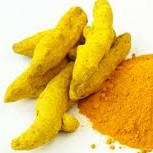 Curcumin, the active component of turmeric turn off certain genes that cause scarring and enlargement of the heart. Regular intake of turmeric may help reduce low-density lipoprotein (LDL) or bad cholesterol and high blood pressure, increase blood circulation and prevent blood clotting, helping to prevent heart attack.
Curcumin, the active component of turmeric turn off certain genes that cause scarring and enlargement of the heart. Regular intake of turmeric may help reduce low-density lipoprotein (LDL) or bad cholesterol and high blood pressure, increase blood circulation and prevent blood clotting, helping to prevent heart attack.
Garlic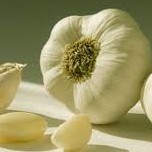
It is considered that a garlic a day keeps sickness away. An effective fat-burning food, garlic contains the sulphur compound allicin which has anti-bacterial effects and helps reduce cholesterol and unhealthy fats.
Cardamom
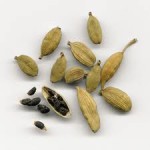 Cardamom is a thermogenic herb that increases metabolism and helps burn body fat. Cardamom is considered one of the best digestive aids and is believed to soothe the digestive system and help the body process other foods more efficiently. Added in spicy dishes , desserts and in many recipes to maximize benefits.
Cardamom is a thermogenic herb that increases metabolism and helps burn body fat. Cardamom is considered one of the best digestive aids and is believed to soothe the digestive system and help the body process other foods more efficiently. Added in spicy dishes , desserts and in many recipes to maximize benefits.
Chillies
Foods containing chillies are said to be as foods that burn fat. Chillies contain capsaicin that helps in increasing the metabolism. Capsaicin is a thermogenic food, so it causes the body to burn calories for 20 minutes after you eat the chillies. Minimize quantity intake to avoid spoiling the day.
Honey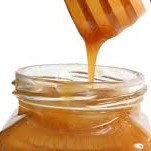
Honey is a home remedy for obesity. Honey mobilizes the extra fat deposits in the body allowing it to be utilized as energy for normal functions. One should start with about 10 grams or a tablespoon, taken with water early in the morning. It boost immune system and contains anti bacterial properties. Be careful to pick the natural variety when you purchase.
Buttermilk
Buttermilk contains just 2.2 grams of fat and about 99 calories, as compared to whole milk that contains 8.9 grams fat and 157 calories. Regular intake provides the body with all essential nutrients and does not add fats and calories to the body. It is thus helpful in weight loss. You can consume this with a little of salt and curry leaves. Relieves tiredness of the scorch heat.
Curry leaves
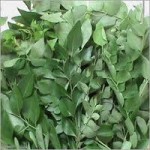 Incorporating curry leaves into your daily diet can help you lose weight. Curry leaves flush out fat and toxins, reducing fat deposits that are stored in the body, as well as reducing bad cholesterol levels. If you are overweight, incorporate eight to 10 curry leaves into your diet daily. Chop them finely and mix them into a drink, or sprinkle them over a meal.
Incorporating curry leaves into your daily diet can help you lose weight. Curry leaves flush out fat and toxins, reducing fat deposits that are stored in the body, as well as reducing bad cholesterol levels. If you are overweight, incorporate eight to 10 curry leaves into your diet daily. Chop them finely and mix them into a drink, or sprinkle them over a meal.
Moong dhal
The bean sprouts are rich in Vitamin A, B, C and E and many minerals, such as calcium, iron and potassium. Moong dhal is recommended as a food replacement in many slimming programs, as it has a very low fat content. It is a rich source of protein and fiber, which helps lower blood cholesterol level. The high fiber content yields complex carbohydrates, which aid digestion, are effective in stabilizing blood sugar and prevent its rapid rise after meal consumption.
Oatsmeal
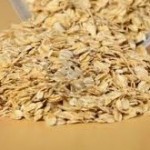 Oatmeal is high in soluble fiber and that will reduce cholesterol significantly. It will also help flush many acids and fats out of your body. It is important to eat oatmeal without putting sugar and butter on it to make it more palatable. If you have to sweeten it, do it with fresh fruits or natural honey.
Oatmeal is high in soluble fiber and that will reduce cholesterol significantly. It will also help flush many acids and fats out of your body. It is important to eat oatmeal without putting sugar and butter on it to make it more palatable. If you have to sweeten it, do it with fresh fruits or natural honey.
Cabbage
Raw or cooked cabbage inhibits the conversion of sugar and other carbohydrates into fat. Hence, it is of great value in weight reduction. Include it as salads or steamed side dish.
Beans
Cooked beans are very good to cut down fat. You can consume cooked beans like kidney beans, white beans. Include them with breakfast. Makes a good diet for the day. The proteins in the beans will help to burn fats. Beans are high in both fiber and protein and can help in burning down fat while delivering great energy and nutrition. Furthermore, beans are low in calories and saturated fats, though you should avoid consuming refried beans which are actually high in saturated fats.
Eggs
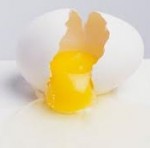 Eggs have a perfect balance of amino acids. These are the protein building blocks your body uses to develop muscle fibers. Eating an egg daily can assist with cutting fat. If you have high cholesterol, you can opt for egg white only.
Eggs have a perfect balance of amino acids. These are the protein building blocks your body uses to develop muscle fibers. Eating an egg daily can assist with cutting fat. If you have high cholesterol, you can opt for egg white only.
Be cautious of the food you take . Exercise and maintain good health. You can further follow Simple ways to include Ayurveda in everyday life.
AYURVEDIC TREATMENT FOR PSORIASIS
January 30, 2013 by admin
Filed under Tips for Ayurveda
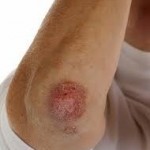 Psoriasis is a non infectious, inflammatory disease of the skin . Psoriasis is associated with dryness, itching, silvery scales on the skin and flakes on the scalp. Psoriasis can begin at an age of 20 or between 5 and 60 years too. It affects both the genders and the exact reason for Psoriasis is not known.
Psoriasis is a non infectious, inflammatory disease of the skin . Psoriasis is associated with dryness, itching, silvery scales on the skin and flakes on the scalp. Psoriasis can begin at an age of 20 or between 5 and 60 years too. It affects both the genders and the exact reason for Psoriasis is not known.
There is no treatment for psoriasis that can guarantee 100% result. Psoriasis is an auto immune disorder of the skin resulting in hyper proliferation of the skin especially at the elbows, knees, scalp. A natural psoriasis treatment that may help one person may have no effect on another person. Psoriasis treatment requires strict dietary restrictions and life style practices.
Ayurveda believes that impurities in the blood associated with emotional factors are the cause of the disease. Psoriasis known as Sidhma Kushtam is believed to occur due to vitiation of vata and kapha according to the ayurvedic concept. Irregular food habits, consumption of food items that cannot be eaten together for eg: diary products with fish, excessive intake of yogurt, black gram, seafood, jaggery ,sour and salted items etc can activate skin ailment. Alcohol and tobacco consumption will act as a catalyst here. Ayurveda emphasizes on the effect of stress which worsens the person affected by psoriasis.
Panchakarma treatment for psoriasis
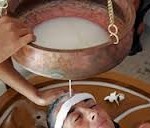 Panchakarma, the basic body purification method is used in the treatment of psoriasis. Ayurvedic treatment for psoriasis goes through several stages .
Panchakarma, the basic body purification method is used in the treatment of psoriasis. Ayurvedic treatment for psoriasis goes through several stages .
- Lepanam (application of ointments),
- Abhayangam (oil massage),
- snehapanam (taking medicated ghee),
- pizhichil (full body massage),
- avisnanam (medicated steam bath),
- sirovasti (keeping oil on head) and
- bastis (medicated enema).
Both systemic and topical treatments are used and can include drinking medicated ghee, purging and vomiting to detoxify.
- Detoxifying, by inducing vomiting (Vamana) and purgation (Virechana).
- Using medicated buttermilk dripping overhead (Dahara)
- Followed by pasting the entire body topically with a paste of medicines and mud,
- Finally medicated enemas (Basthi’s) are given for a week.
Internal medications in the form of herbal concoctions and medicated ghee has to be consumed for atleast three months.
Herbs used in Ayurvedic treatment for psoriasis
- Turmeric has anti-inflammatory and anti-bacterial properties and will help relive pain, reduce inflammation. Due to the antibacterial and anti-inflammatory properties of turmeric, it relieves the pain, swelling and inflammation associated with psoriasis, arthritis etc.
- Garlic (Allium sativum) – helps purify the blood and get rid of toxins
- Neem – purifies and detoxifies, helps the immune system and has antis, anti-bacterial and anti-fungal properties. It enhances immune system and neem oil is an antiseptic in itself. Will help with the redness and itching of psoriasis.
- Guggul a resin from a tree that grows in India it is anti-inflammatory and helps remove excess fats and fluids from the body. Kaishore guggul is useful remedy for psoriasis.
- Black Nightshade (Solanum nigrum)- Kakmachi – The juice of the leaves of the black nightshade can be applied locally on the affected regions. It helps in reducing the inflammation of the skin, and also has beneficial properties in minimizing discomfort and itching.
- Aloe vera: The gel extracted from the medicinal herb may be affected directly on the affected parts. The anti burn property is helpful to minimize itch and gives a cooling effect on the skin. Moisturizes skin and extremely helpful for plaque psoriasis.
- Jasmine (Jasminum polyanthum)–The flowers of the jasmine reduces pain, inflammation and soothes itching.







